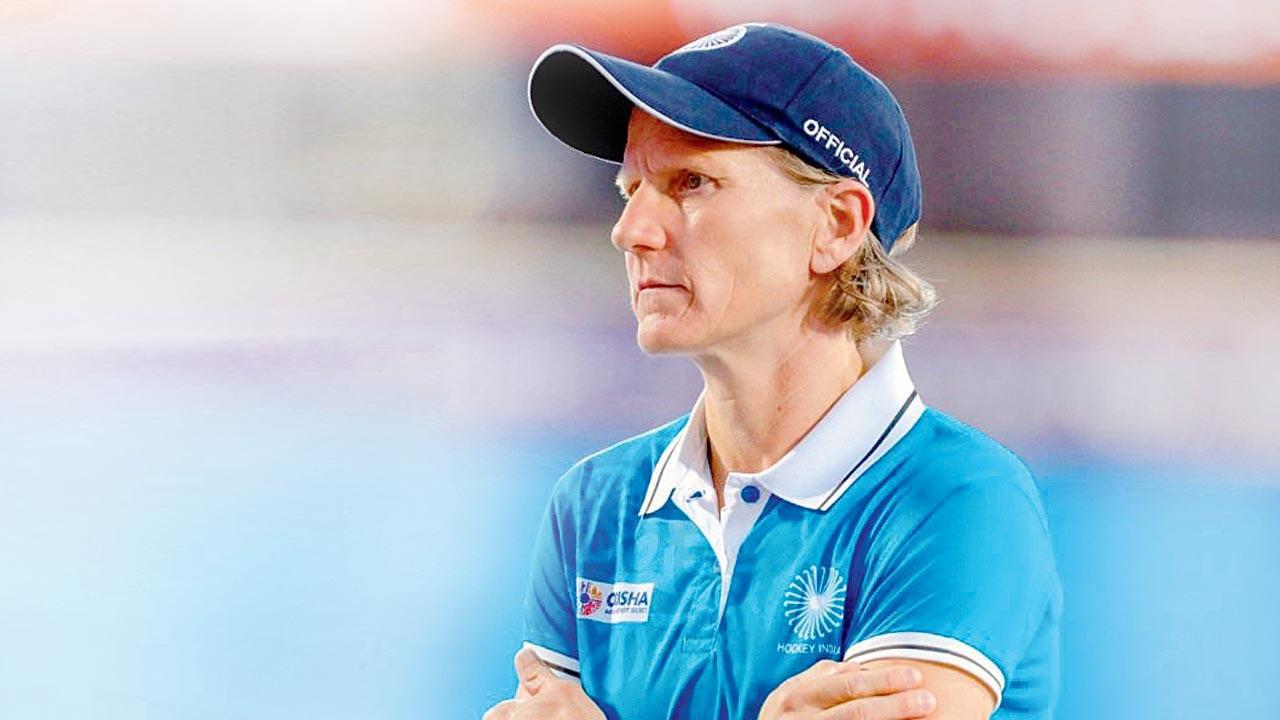The Indian girls were winless in their first three league games after which they lost the crossover match to Spain and then beat Canada and Japan in the classification matches

Janneke Schopman
The Indian women’s hockey team had a disappointing outing at the recent FIH World Cup in The Netherlands and Spain, finishing ninth in the 16-team competition.
ADVERTISEMENT
The Indian girls were winless in their first three league games after which they lost the crossover match to Spain and then beat Canada and Japan in the classification matches. Both, coach Janneke Schopman as well as the players, realise that a lack of goals is one of the main reasons for their unimpressive showing and are keen to get that right in the upcoming Commonwealth Games in Birmingham (July 28 to August 8).
“Our performance at this World Cup in terms of outcomes was not good enough. We created a lot of penalty corners, which is good, but our execution failed us. We struggled with our [penalty corner] injections as the field was a different from the one we train on. We have to execute better and for that, we need to train harder,” coach Schopman said in reply to a question from mid-day during a virtual interaction from Nottingham, where the team are based for their final preparatory phase for the CWG.
Also Read: PV Sindhu is a certainty for gold: Prakash Padukone
The Indian eves converted just five penalty corners in six matches at the quadrennial competition and senior members of the team, Monika and Nikki Pradhan, also agreed with their coach that their low conversion rate hurt. “We combined well as a team, but unfortunately were not able to convert our chances into goals. Even in the match against New Zealand [which India lost 3-4], we earned more penalty corners than them. We also had more circle penetrations than them, but didn’t convert,” said Monika.
Pradhan added: “Our passing was good, but finishing was lacking. We are currently watching videos to learn where we fell short.” Coach Schopman felt that her team’s attacking strategy has changed the defensive set-up of the opposition and that is making life difficult for India’s forwards. “Earlier, when we used to play defensively and our opponents would attack more, that would create space upfront for our forwards. But now it’s the opposite. We are attacking more and our opposition teams like China and Canada [at the World Cup] were happy to defend. So, suddenly we have 11 players defending in the opposition circle and that leaves our forwards with less space. We have to now work on how to use that less space more effectively. For this, we have to fine-tune our individual skills and change our approach as per our opposition’s strategy,” explained Schopman.
India play Ghana in their first CWG match on July 29.
 Subscribe today by clicking the link and stay updated with the latest news!" Click here!
Subscribe today by clicking the link and stay updated with the latest news!" Click here!







